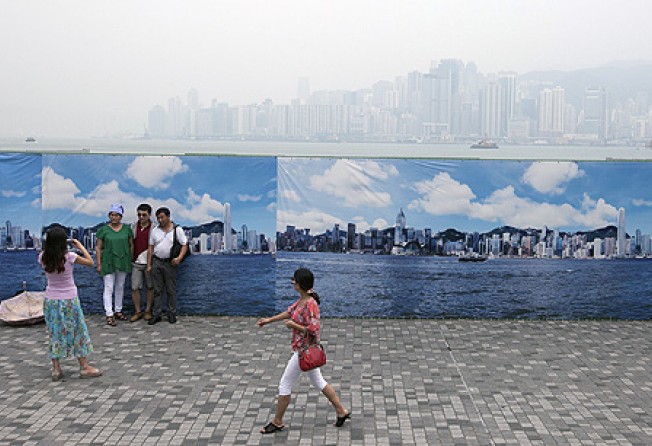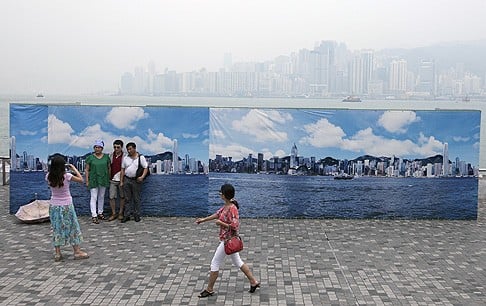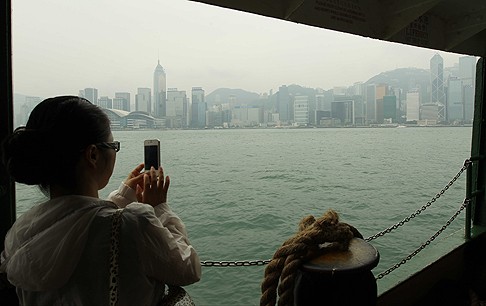Smog clogs Hong Kong’s skyline as ‘very high’ pollution levels recorded

Much of Hong Kong was shrouded in a haze on Thursday as a continental air stream associated with Tropical Cyclone Trami contributed to the trapping of pollutants in the city’s air.
The air pollution index remained a “very high level” for most parts of the city on Thursday as smog and pollutants accumulated.
Roadsides of three busy areas were the worst hit. Mong Kok recorded a roadside air pollution index of 167 at 8am, Causeway Bay hit 184 and Central reached 174.
A reading of between 101 and 200 means the pollution level is very high and that people with heart or respiratory illnesses may notice a mild aggravation of their condition, according to the Environmental Department.
Visibility in Central also dropped to only 1,500 metres between 9am and 10am.
Principal Environmental Officer Dave Ho Tak-yin explained that local winds were stagnant under the influence of Trami, making it difficult for air pollutants to disperse.
“The light wind condition and intense sunlight favoured the photochemical smog in the region resulting in the high regional background pollution,” Ho said.
“The high air pollution incident is a result of the trapping of local pollutants, in particular nitrogen dioxide, in the territory under the light wind coupled with the relatively high regional background pollution,” he said.

Trami made a landfall in Fujian early on Thursday, bringing torrential rain and winds of up to 120 kilometres per hour to the province.
Ho added that pollution levels would remain high on Thursday, but would start to improve gradually later in the day as the wind was expected to pick up.
A regional air quality report released in April found air quality in the Pearl River Delta improved last year. Officials attributed the decrease to emission reduction efforts.
Video: How to deal with Hong Kong's smog - Clean Air Network's Sum Kwong tells The Post where this seasonal smog problem comes from and how to best deal with it when it comes to your family.
Last year, Guangdong expanded the supply of cleaner petrol and boosted a clean-up at power plants and cement kilns, and Hong Kong tightened its vehicle emission standards.
But Hong Kong concern groups said roadside pollution had deteriorated because the city had been slow in phasing out aged, heavily polluting vehicles. They said the government had to speed up the process in order to improve air quality at street level.
In April, severe pollution hit the city when the roadside readings in Central peaked at 210. Last August, the reading also hit 212 in the district.
